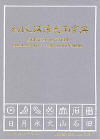


|
Elementary Chinese Pictorial Dictionary (Bilingual) $25.00
Chinese Picture Dictionary for Beginners is a reference book for foreigners to learn basic Chinese. It helps them to recognize the form of the Chinese characters, pronounce them accurately and understand their meaning, which will lay a foundation for using the Chinese language correctly.
The dictionary contains more than 1600 entries. It provides about illustrations to help the learners understand the words and phrases correctly and easily, as the audio-visual images define them directly and vividly. The pictures and verbal definition are mutually complementary. There are also 20 inserted pages of colored pedicures showing classified plants and animals.
Notes of the use of the dictionary- This dictionary adopts the method of looking up words according to phonology or radicals by which characters are arranged in traditional Chinese dictionaries. At the beginning of the dictionary are the "List of Chinese phoneticized syllables" and the "List of radicals for looking up Chinese words."
- The pronunciation, radical and number of strokes of a Chinese character (except the strokes of the radical itself) and the order of strokes observed in calligraphy are clearly indicated after each entry. These will help the readers to be familiar with and master the pronunciation, structure and correct handwriting of Chinese characters.
- The entries are arranged in the Chinese phonetic alphabetical order. Characters of the same syllable are put in the order of their tones, namely the four tones of modern standard Chinese pronunciation: 1. the high and level tone, 2. the rising tone, 3. the falling-rising tone and 4. the falling tone.
- Characters with more than one pronunciation and those of the same syllable but different tones are in the same entry. Words of different pronunciations and syllables are in different entries marked with "see also" after it.
- The meanings of a polysemous word are numbered and annotated separately. The definitions are not exhaustive, but the basic meanings, which occur most frequently, are included. Examples given after the explanation and difficult illustrative words are put in brackets. If there are more than one example word or sentence, they are separated by the sign "|".
- The standard Chinese pronunciation (putonghua-common speech) is used as the phonetic notation for the characters in the whole dictionary. Characters read in the light tone don’t bear any tone mark. The tone of the two characters changed by the influence of their neighboring syllables, can be transcribed in their modified tone.
- Characters, which are easy to be mispronounced and wrongly written, are called attention to by the contrastive method.
- In order to help readers to use the Chinese phonetic symbols easily, the dictionary includes the "diagram of the Chinese phonetic symbols", the "Chinese phonetic alphabet" and the "Song of the Chinese phonetic letters" before its main body.
|

